
views
Choosing a Psyllium Husk Product

Understand the uses of psyllium husk. Psyllium husk is a source of soluble fiber. It is often used for occasional constipation and to help restore regularity. Psyllium husk works by absorbing water in your digestive tract and combining with the water to form bulky stool. This process stimulates digestion and helps quicken the passage of stool. For this reason, psyllium husk is known as a bulk forming laxative. Psyllium husk is also used to help treat irritable bowel syndrome and diverticular disease. These conditions cause pain and digestive problems that may be alleviated by incorporating psyllium husk into your daily routine.

Call your doctor before you purchase a psyllium husk product. Your doctor may advise against taking psyllium husk products if you are on any medications. Psyllium can reduce the absorption of medications into the digestive system. If your doctor says it's okay to take psyllium husk with your medications, he or she may recommend that you take psyllium husk at least 2 hours before or after you have taken your other medications. This time between taking psyllium husk and your medications will reduce the likelihood that the psyllium will affect your medication absorption.
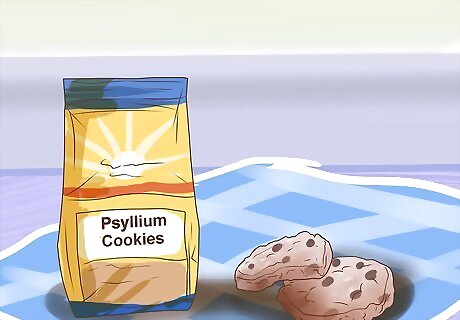
Choose a psyllium husk product that suits your needs. You can get psyllium husk in a wide variety of forms, from powders to cookies. Pure psyllium husk powder has a sawdust-like texture that some people find unpleasant, so it is also available in forms that are flavored and easily dissolvable. The advantage of these products is that they have a more pleasant taste and texture than pure psyllium husk. Psyllium products like Metamucil are known as blond psyllium and they often contain sugar and other additives. You can purchase flavored Metamucil powder to mix with water or you can even get cookies or wafers that contain psyllium husk. Follow the instructions on the package when taking one of these forms of psyllium husk. If you prefer, purchase a 100% psyllium husk powder product at a health food or nutrition store. This type of psyllium husk has no flavor or added sugar, so it is best to mix it with water or juice.

Read the instructions on the package before purchasing any psyllium husk product. Make sure that you understand the dosage instructions and contraindications of the product before you leave the store. If you have any questions about the product and whether or not it may interact with your medications, ask a pharmacist.
Taking Psyllium Husk
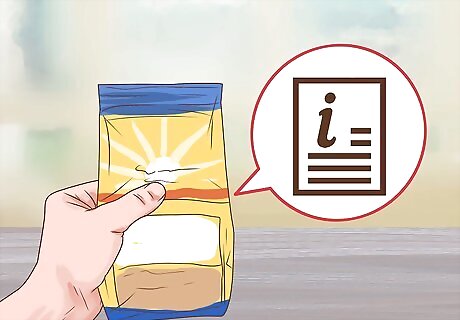
Read the product instructions before taking a psyllium husk powder. Some products may not be compatible with certain medications or chronic conditions. In addition, dosages differ with each product. Most psyllium husk products can be taken one to three times a day. Your doctor may suggest a higher dosage to relieve severe constipation or diarrhea or if you are using it for other issues.
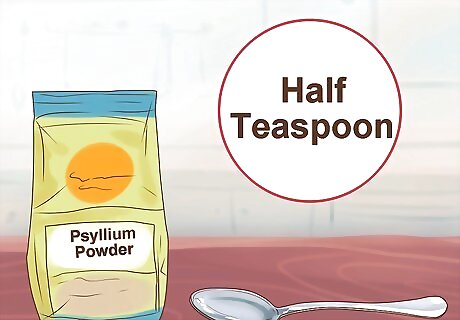
Add psyllium husk into your diet slowly. It is better to add fiber to your diet slowly to decrease discomfort, bloating and gas. Measure half teaspoon dose the first time you take psyllium and increase the amount by a half teaspoon every few days until you are taking the recommended dosage.
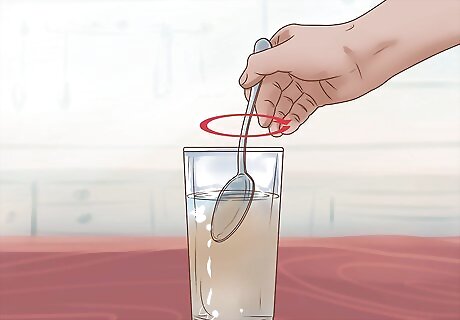
Mix the psyllium husk powder with eight ounces (0.2l) of water or juice. Stir it well for about 10 seconds. Add more liquid if it is too thick. Do not allow the mixture to sit after you have mixed it because it will begin to form a gel that may be difficult to swallow.

Drink the mixture immediately. Psyllium husk becomes gel-like and bulky after a short time. It can create a choking hazard if it is taken in a semi-solid form. Make sure that you have used enough liquid and that you drink the mixture right away to avoid this potential hazard. If your psyllium husk mixture is gel-like, throw it out and mix a new batch.
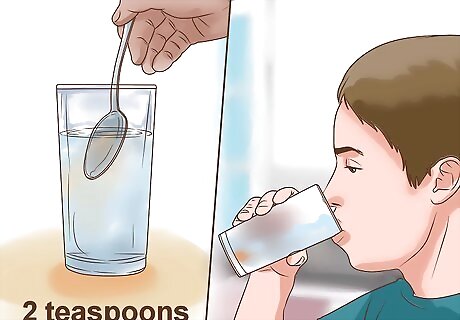
Increase your dosage to two teaspoons in eight ounces of water after one to two weeks. If you are taking multiple doses of psyllium husk, try to space your doses out throughout the day. For example, you could take one dose of psyllium husk in the morning, one at midday, and one in the evening. Keep in mind that your doctor may suggest a higher dosage to relieve severe constipation or diarrhea. Do not exceed the recommended dosage unless your doctor has told you to do so. For treatment of high cholesterol, 10 to 12 g of psyllium may be prescribed. This is approximately two to three tbsp. of psyllium, broken up into smaller doses with 8 to 16 oz. of water throughout the day. If you think that you may have overdosed on psyllium, contact your local poison control center by calling 1-800-222-1222.

Take a serving of psyllium wafers if you can't swallow the psyllium husk drink mix. Wafers may also be preferable if you dislike the taste of the drink mix. Take small bites and chew each bite very well. Drink a glass of water or juice with the wafer. This will ensure it starts to bulk up when it reaches your stomach.
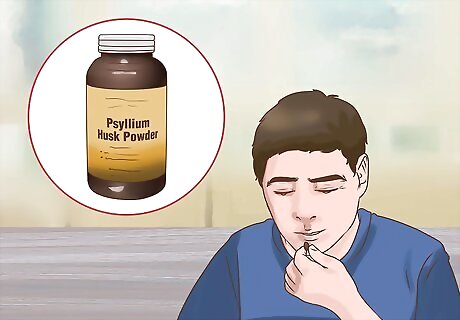
Take psyllium capsules if you cannot take the powder or wafers without nausea or discomfort. Read the product instructions to determine how many capsules you should take per dose and how many doses you should take per day. Take the capsules with a large glass of water.

Be patient if you are using psyllium husk for constipation. It may take up to 3 days for your symptoms improve. Your stools should be softer and more frequent. If psyllium husk has been recommended by your doctor, keep using it as directed. Talk with your doctor if your symptoms do not improve after 3 to 5 days of treatment. Do not use psyllium husk products for more than seven days without consulting your doctor.

Make other lifestyle changes to help with constipation. If you are planning to take psyllium to help with constipation, make sure that you incorporate some other positive lifestyle changes as well. Constipation means you have three or less bowel movements per week. Your stool is hard and can be difficult to pass. If you have constipation, try these lifestyle changes. Drink plenty of fluids. The Institute of Medicine recommends about 3 liters for men and 2.2 liter for women of water AND liquids combined. Increase intake of dietary fiber. Fruits such as pears, berries, prunes and apples are high in fiber. Beans, sweet potatoes, spinach, and whole grains are also good sources. Avoid high sugar or high fat, processed foods. These include white breads, doughnuts, sausage, fast-food, and french fries and others. Use the restroom when you need to go. Holding or delaying going to the restroom can make constipation worse. Your stool may be harder and if you delay, your body may not be ready to defecate later on. Exercise daily. Exercise can help stimulate your digestive tract, which will help your body process food.
Knowing When to Call a Doctor

Call your doctor if your constipation does not improve after a few days. If you have continuous constipation that lasts more than one week, you should call your doctor right away. You should also call your doctor if you have any other drastic changes in your bowel habits, such as bloody stools or bleeding from your rectum. These symptoms may indicate a serious problem that requires medical treatment.

Call your doctor if you experience mild side effects as a result of using psyllium husk. Some people experience negative side effects and mild allergic reactions to psyllium husk. Discontinue use of psyllium husk products and call your doctor if you have any of these mild side effects. Some of the side effects that you should watch for include: gas stomach pain diarrhea constipation nausea runny nose headache backache cough

Seek immediate medical attention if you experience severe side effects. In some cases, an adverse or allergic reaction to psyllium husk may create a life-threatening situation. If you experience any severe symptoms after taking psyllium husk, you should call 911 or go to an emergency room right away. The severe symptoms that you should watch for include: flushing severe itching shortness of breath wheezing swelling of the face or body chest and throat tightness loss of consciousness chest pain vomiting difficulty swallowing/breathing




















Comments
0 comment